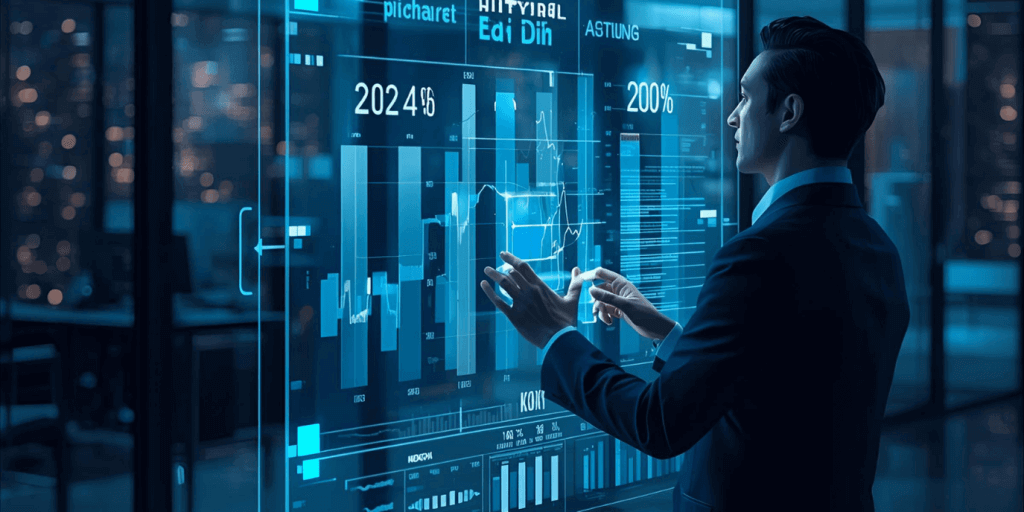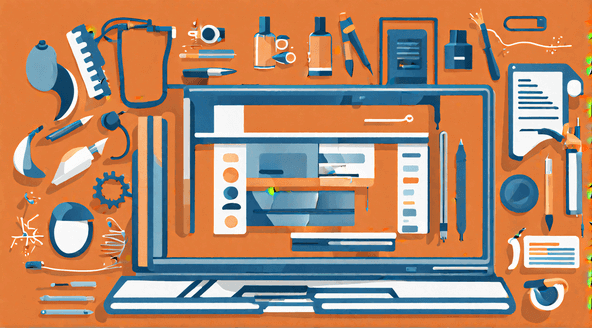In 2025, AI in marketing is no longer a speculative luxury — it’s an expectation. Marketers are under constant pressure to do more with less, squeezing efficiency and precision from every campaign. The shift from “let’s try AI” to “let’s make AI pay” is well underway.
We’re now entering a phase where automation must deliver concrete outcomes—more leads, higher conversion rates, better retention—not just flashy demos. At Refresh, we believe the future isn’t about replacing humans: it’s about elevating them with the precision, speed, and scale that only AI can deliver.
The evolution of AI in marketing: from hype to results
Early hype and experimentation
A few years ago, much of AI’s presence in marketing was aspirational. Brands squeezed generative models into ideation workshops, ran pilot chatbots, and tested predictive overlays, often with mixed success. Many efforts were exploratory and lacked rigorous performance metrics.
The shift to rigor and accountability
In 2025, that’s changing. According to survey data, 93% of marketers now use AI to speed content creation, and 81% use it to uncover insights faster. SurveyMonkey Generative AI is now “no longer a future consideration,” with 93% of CMOs reporting clear ROI on their deployments. TechRadar What once was buzz is now table stakes.
Yet in the boardrooms, not everyone is winning. A 2025 Boston Consulting Group study finds only 5% of large firms are fully deriving value from their AI investments. Business Insider That gap between adoption and impact is the battleground for agencies like Refresh.
Defining phases of AI maturity
We can think of AI adoption in marketing as progressing through stages:
- Pilot / proof-of-concept — Is AI technically viable?
- Operational deployment — Are certain workflows fully supported?
- Optimization and scaling — Can AI iterate, self-improve, and drive margins?
- Business transformation — Is AI a core engine of competitive advantage?
Many organizations stall in phase 2. The difference between “using AI” and “making AI pay” is how well you embed AI into your performance framework.
How automation improves efficiency across campaigns
Automation (powered by AI) touches every axis of modern marketing. When done right, it multiplies output, reduces waste, and accelerates feedback loops.
Content automation: scale + quality
- 87% of marketers now use AI to support content creation tasks (ideation, revision, optimization)
- Teams using AI publish 42% more content monthly (e.g. 17 vs. 12 articles median)
- In a human + AI collaboration experiment (N = 2,310 participants), teams working with AI agents were 60% more productive than all-human teams.
In practice, Refresh uses AI to generate campaign outlines, draft segments, optimize CTAs, and even produce visual mockups. The marketing team then refines them. “AI doesn’t replace strategy — it accelerates it.”
Targeting & segmentation: data-driven precision
- AI-driven segmentation enables hyper-personalization, automating what would have taken days to do manually.
- In media buying, AI optimizes bid strategies in real time, adjusting placements based on micro-trends and budget pacing (IAB’s “State of Data 2025” outlines this shift).
Campaign orchestration & workflow
- In the 2024 “State of Marketing Automation” survey, 76% of companies using automation saw positive ROI within the first year.
- Nucleus Research data shows a $5.44 return per $1 invested over three years.
- Another study claims $8.71 ROI per $1 in some cases.
These returns are driven by reduced manual hours (fewer campaign hand-offs, standardized templates) and more effective use of high-value human time.
Reporting and attribution: closing the loop
A common friction point has been reattaching results to initial inputs. AI-powered dashboards can now ingest cross-channel data (email, web, ads) and attribute credit, adjusting for latency and media interactions. Automation then triggers adjustments—budget shifts, creative swaps, bid tuning—without human intervention.
Top AI marketing tools marketers are actually using in 2025
Below are categories and examples of tools that are producing measurable results (not speculative labs).
Generative content & creative
- OpenAI GPT / custom fine-tuned models — used to draft copy, generate versions, rewrite for tone or audience
- Adobe AI agents — help brands run site-level personalization, content recommendations, dynamic messaging. Recently, Adobe announced rollout of marketing AI agents to optimize website interactions.
- Claude, Gemini, Jasper — used in ideation, content iteration, and augmentation
Many firms pair these with internal prompt engineering layers to enforce brand tone and quality.
Predictive & prescriptive analytics
- HubSpot’s AI module, Salesforce Einstein, Oracle Maxymiser — help forecast lead conversions, segment funnels, churn risk
- Custom ML models — built in-house or via consultancy using client first-party data
Predictive marketing, in the AI era, is not a promise—it’s a working tool. Models suggest which leads deserve more budget and which creative bubbles merit testing.
Campaign & orchestration automation
- Marketing automation platforms such as HubSpot, Marketo, ActiveCampaign
- Zapier / Make (Integromat) — glue tools that automate cross-platform workflows
- AdTech platforms with AI modules — e.g. programmatic DSPs that auto-optimize toward conversion goals
In 2024, the global marketing automation market was estimated at ~$6.62B, expected to soar to $13.7B+ by 2030.
Performance dashboards & attribution
- Datorama / Looker / Tableau + AI connectors — transforming raw data into actionable insights
- Incrementality platforms (e.g. Causalify, Incrementality API) — measuring uplift, not just last-click attribution
All tools are only as good as the inputs. Even the best dashboards require disciplined tagging, clean datasets, and governance.
Balancing automation with creativity: why human strategy still matters
Automation can handle volume and structure, but it doesn’t (yet) replace nuanced judgment, brand vision, or narrative architecture.
Why we still need human strategy
- AI can echo patterns but struggles with disruption. True strategic moves often break molds.
- Brand voice, tone, and emotional resonance remain human domains.
- Decisions about where to experiment, which bets to place, and how to pivot are inherently strategic.
“AI is a multiplier of intention, not a substitute for it.”
Best practices for collaboration
- Guardrails & prompt architecture: Use prompt templates and brand rules to guide auto-generation
- Human-in-the-loop checks: Always include review layers in content workflows
- Experimentation mindset: Automate A/B iterations, but keep human oversight on creative pivots
- Team alignment: Educate teams on “AI as teammate,” not replacement
Evidence supports this. In the human–AI teamwork experiment, human-AI teams produced ad copy of equal or better quality, while humans could spend more time on higher-value tasks.
Data, privacy, and performance: how to measure real ROI in the AI era
Performance without trust is hollow. As marketers, we must ground our AI deployments in transparent metrics and responsible practices.
Challenge: data silos, noise, and bias
- AI models thrive on clean, connected data — yet many organizations struggle with fractured tech stacks
- Training data bias can propagate content misalignment or mis-segmentation
- In one survey, nearly all large firms deploying AI reported some financial losses due to compliance failures or flawed outputs.
Framework: ROI in five dimensions
We adapt the 5P framework (Purpose, People, Process, Platform, Performance) to AI measurement:
- Purpose: Define clear business KPIs (e.g. +20% MQLs, -10% CAC)
- People: Train teams to use AI tools and interpret outputs
- Process: Document workflows, feedback loops, escalation paths
- Platform: Ensure data integrity, governance, security
- Performance: Use multi-touch modeling, lift studies, incremental testing
This approach helps render invisible dependencies visible—and uncovers hidden value drivers.
What metrics matter most
- Incrementality / uplift (not just last-click)
- Cost efficiency (e.g. cost per qualified lead, CAC)
- Time savings (hours or FTEs reallocated)
- Quality metrics (conversion rate, engagement, churn)
- ROI curve over time (e.g. payback period, ROI at 6/12/24 months)
Refresh always bundles “efficiency credits” (hours saved) alongside direct revenue metrics — because they both matter in building business cases.
Privacy, compliance, and transparency
- Use privacy-preserving modeling (differential privacy, federated learning) where possible
- Always document data lineage and model decisions
- Be transparent internally and externally: if AI influenced customer interactions, disclose insights (not necessarily full models)
Responsible AI practices lower risk and build trust, which helps long-term adoption.
Future outlook: where marketing agencies like Refresh see the biggest opportunities next
1. Generative orchestration agents
Agents that autonomously launch, monitor, pivot, and sunset campaigns—with human oversight—are near. Think self-managing campaign bots.
2. Synthetic audiences and data augmentation
Using synthetic data to model future prospects or rare segments (while preserving privacy) will unlock new targeting frontiers.
3. Real-time dynamic content fabric
Creative assets that evolve in real time based on user behavior (e.g. headline swap, layout variation) will become standard.
4. AI-native campaign frameworks
Instead of layering AI on legacy stacks, new campaigns will be designed around AI from the start—optimized from inception, not bolted on.
5. Cross-domain AI synergy
Marketing’s AI will interface with sales, operations, product, and support—creating feedback loops across the organization.
At Refresh, we’re positioning ourselves as architects of this bridge: smart automation, clean data infrastructure, and human-led strategy. Our belief: AI is a toolkit, not a magic wand.
Key Insights: 5 Actionable Takeaways
- Start with measurable objectives — don’t adopt AI just to check a box; tie it to growth, margin, or efficiency.
- Embed human oversight early — guardrails, prompt templates, and review loops prevent downstream problems.
- Invest in data infrastructure first — connected, clean, governed data is the foundation of scalable AI.
- Measure uplift, not just outputs — incremental testing and multi-touch attribution separate noise from signal.
- Iterate and scale in phases — begin with high-velocity wins, then extend automation outward while refining.
In 2025, “AI in marketing” isn’t about chasing novelty. It’s about performance, control, and scale. The agencies that thrive will be those that deliver transparency, measurable value, and sustainable growth—not buzzword-laden slides. At Refresh, we’re here to treat AI as the output engine it is, not a gimmick. Let’s build the future together.








